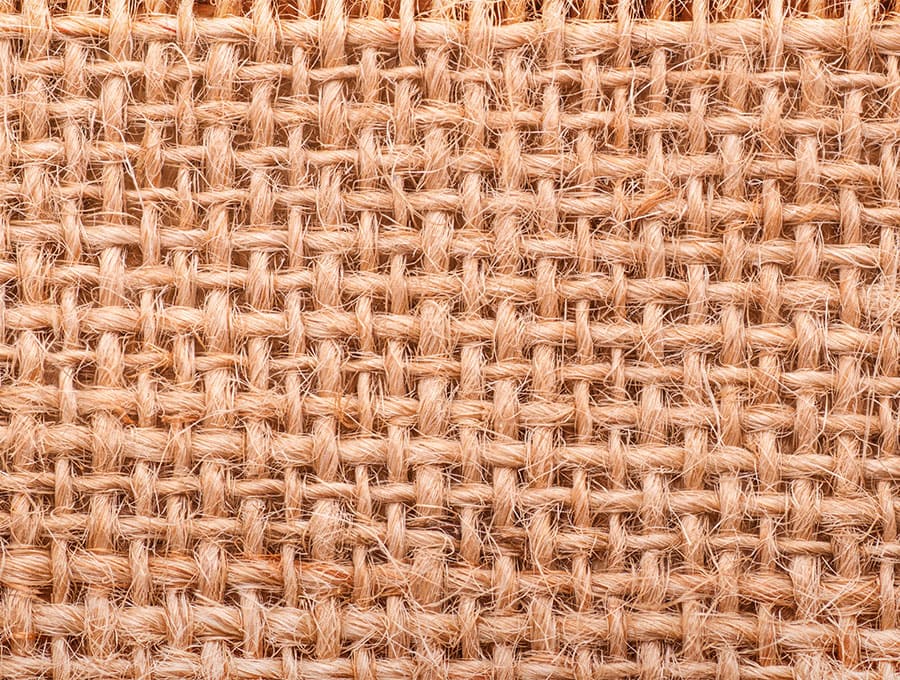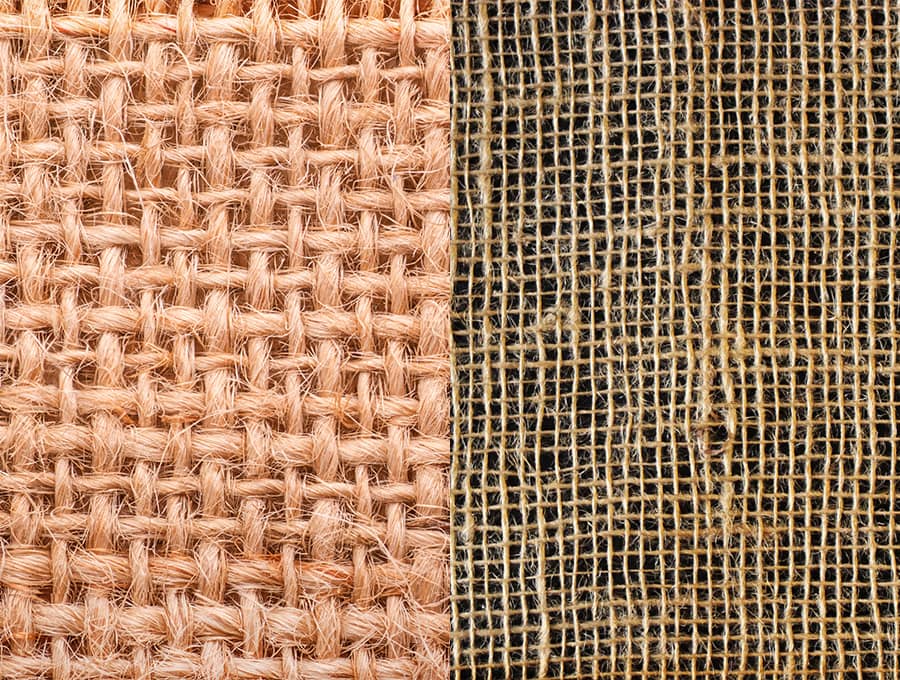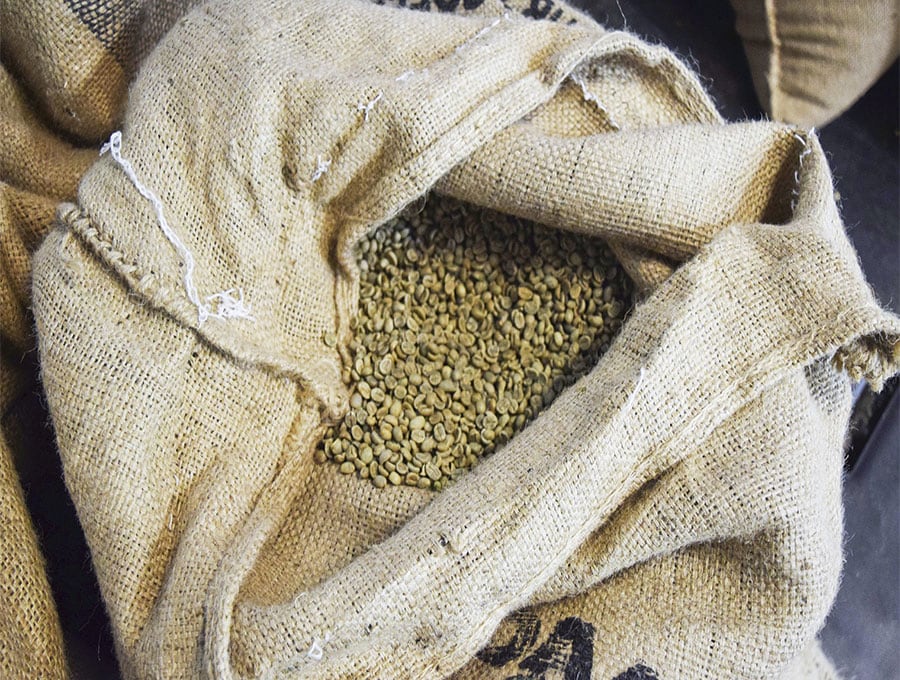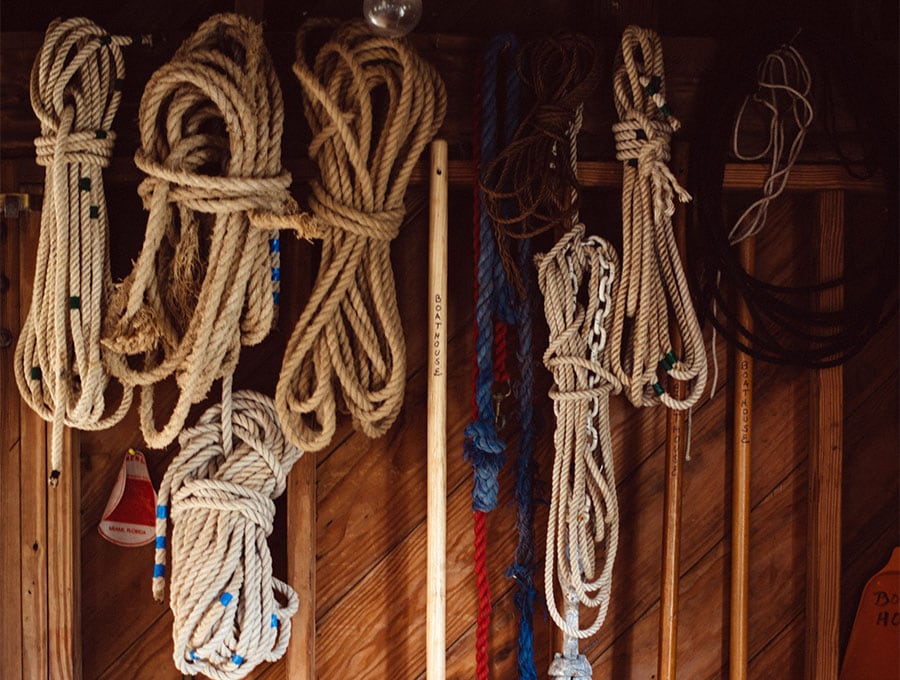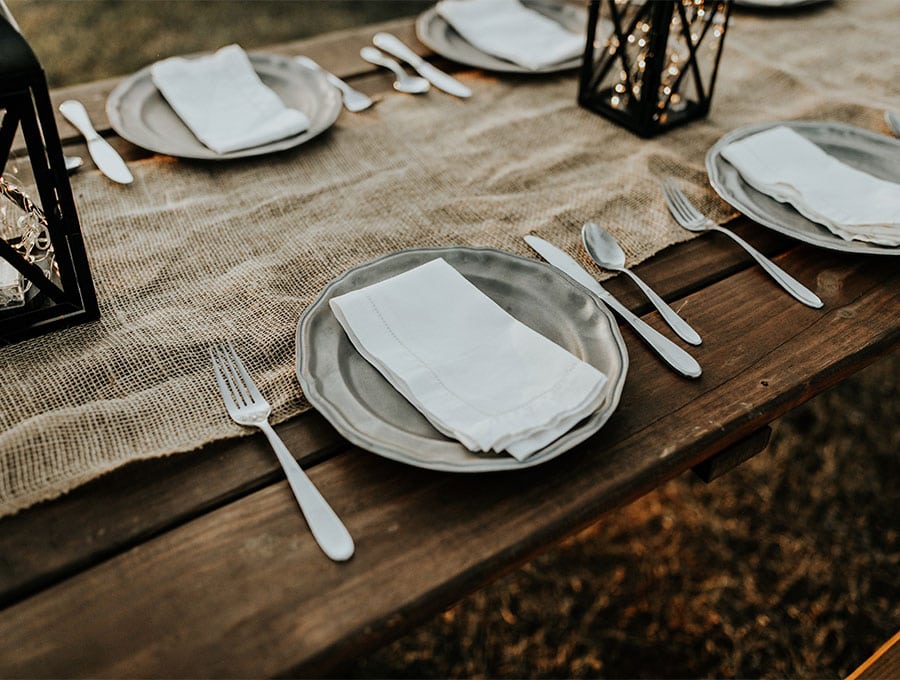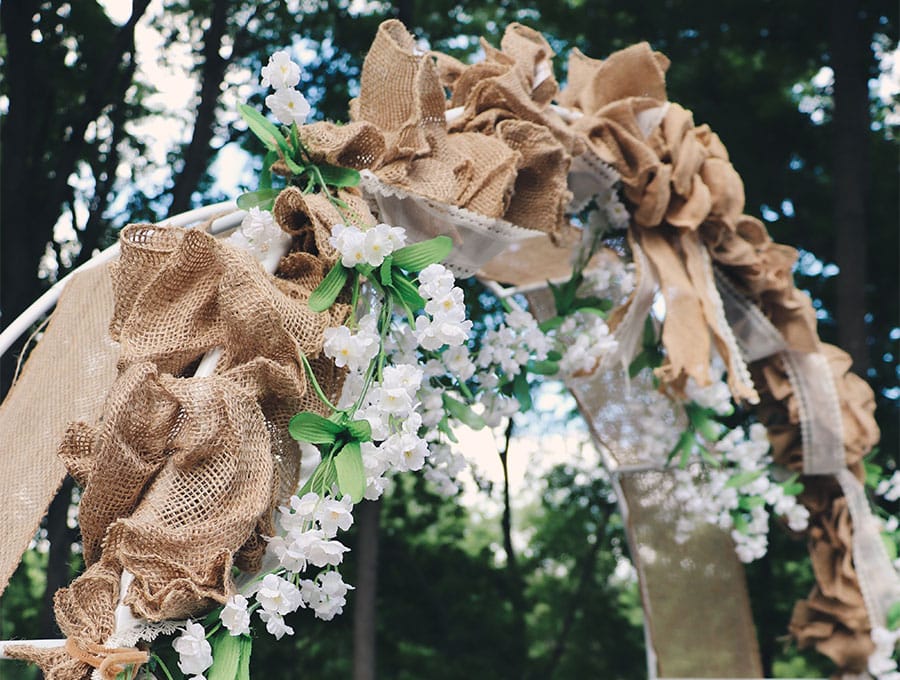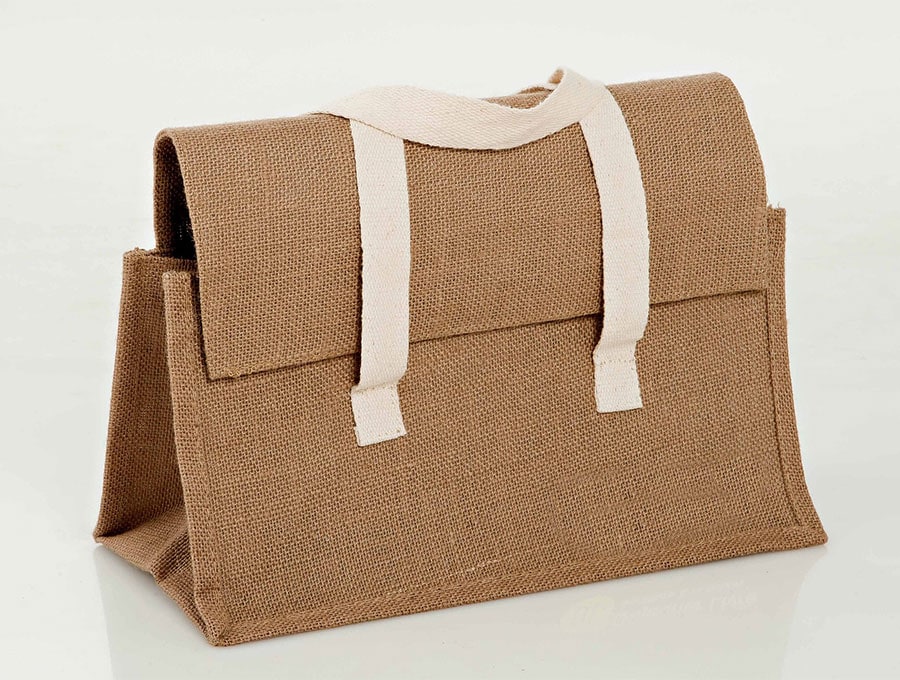What is Burlap? Unraveling the Making, Uses, and Crafting Ideas
Burlap, also known as hessian or jute fabric, is a versatile and eco-friendly material made from the fibers of the jute plant. The jute plant has strong, natural fibers that make it ideal for creating durable and biodegradable products. Burlap is created by spinning these jute fibers into a coarse thread and then weaving the threads together to form a sturdy fabric.
This multifaceted fabric has a wide range of uses, including in agriculture, as it can provide natural, breathable protection for plants and crops. Burlap is also widely used in the packaging industry, particularly for sacks to hold coffee beans, rice, and other bulk items due to its durability and breathability. Additionally, burlap is popular for home décor, crafting, and DIY projects, with creative enthusiasts utilizing its rustic texture and unique appearance for projects such as table runners, tote bags, and decorative pillow covers.
Table of Contents
What Is Burlap?
Burlap is a versatile and durable fabric made from the fibers of the jute plant. It is also known as hessian in some parts of the world. Jute is a long, soft, and shiny vegetable fiber that can be spun into coarse, strong threads. The cultivation of jute primarily takes place in countries with warm, humid climates such as India, Bangladesh, and China.
Burlap has a wide range of uses, mainly due to its eco-friendly nature and strength. Some common applications include:
- Bags and sacks for agricultural products, such as potatoes and coffee beans
- Landscaping and gardening, as a natural and biodegradable barrier for weed control
- Home décor, such as curtains, table runners, and accent pillows
There are different types of burlap fabric available, which vary in terms of their texture, weight, and weave. Some examples include:
- Fine burlap: This type has a tight weave and a smoother finish, making it suitable for crafts and home décor projects
- Coarse burlap: With a looser weave and a rougher texture, this type is ideal for gardening and utilitarian purposes
Crafting with burlap offers numerous possibilities due to its rustic and natural appearance. It can be sewn, glued, or combined with other materials to create unique and attractive projects. Some popular burlap crafts include wreaths, banners, handbags, and DIY wall art.
Making of Burlap
Burlap (hessian or jute fabric) is made from the fibers of the jute plant. Jute is an eco-friendly and biodegradable plant-based fiber, making it a popular choice for various sustainable products. The jute plant, predominantly grown in Bangladesh and India, prefers a humid climate with warm temperatures and abundant rainfall.
After planting, the jute plant takes approximately 4-6 months to grow to maturity. The plants are then harvested during the rainy season when the stalks are at their tallest. The fibers are extracted through a process called retting, where the jute stalks are soaked in water for 15-30 days. This loosens the fibers from the non-fiber components of the plant, allowing for effective separation.
Once separated, the jute fibers are washed, dried, and sorted according to their quality. The sorted fibers are then spun into yarns or threads. The spinning process involves twisting the fibers together to create a strong and durable thread suitable for weaving.
The next step in creating burlap is the actual weaving process. This involves using a loom, which can be either hand-operated or mechanized. The loom holds the yarns under tension, allowing them to be interlaced according to a specific pattern.
The weave of burlap is generally a plain weave, in which a single weft thread (the horizontal thread) passes over and under a single warp thread (the vertical thread) in a simple over, under pattern. This results in a coarse and durable fabric with a rough, textured surface.
As the weaving process is completed, the burlap fabric is rolled onto large rolls, ready for further processing and use in various applications. Burlap can also be dyed and printed for decorative purposes, expanding its usage in the crafting and home decor world.
Types of Burlap
There are various types of burlap available, each differing in texture, weave, and color. For instance, dyed burlap can come in an array of colors, opening up even more possibilities for crafting and décor projects. The fabric’s inherent natural element and adaptability continue to make burlap an attractive choice for a multitude of applications, both practical and artistic.
Natural Burlap
Natural burlap is made from jute fibers, which are derived from the stalks of the jute plant. This eco-friendly material is biodegradable and sustainable, making it a popular choice for environmentally conscious consumers. Some of the uses of natural burlap include:
- Burlap sacks for agriculture and storage
- Weed control in gardens
- Erosion control in landscaping
- Table linens and curtains in home décor
Faux Burlap
Faux burlap is made from polyester fibers and is designed to mimic the appearance and texture of natural burlap. This synthetic alternative offers some advantages over its natural counterpart, such as increased durability, resistance to moisture, and ease of maintenance. Polyester faux burlap can be used for similar applications, with some additional benefits:
- Home décor projects requiring laundered fabric
- Event decorations, like tablecloths and chair covers
- Crafts and sewing projects requiring a more pliable material
Equinox Faux Burlap
Equinox faux burlap is another synthetic alternative to natural burlap, offering a higher quality and more refined appearance. This type of faux burlap is made with a tighter weave and a smoother surface, making it a popular choice for upscale events and home decor. Some common uses for equinox faux burlap include:
- Wedding table linens and décor
- High-quality upholstery and cushion covers
- Specialty crafts and projects requiring a polished finish
Burlap Uses
Industrial Uses
Burlap is commonly used in various industrial applications due to its durability, strength, and eco-friendliness. Some examples include:
- Bags and sacks: Burlap’s strength and breathability make it an excellent material for producing bags and sacks to store and transport various goods, such as agricultural products, sand, and construction materials.
- Ropes: The strong fibers of burlap can also be used to create ropes that can withstand heavy loads and resist rotting.
Gardening and Landscaping
Burlap has several uses in gardening and landscaping, such as:
- Weed control and erosion prevention: Laying burlap on the ground can help control weed growth and prevent soil erosion.
- Seedling protection: Gardeners can wrap young plants and saplings with burlap to shield them from harsh weather conditions and pests.
- Composting: As a biodegradable material, burlap can be added to compost piles to enrich the soil.
Home Décor
The rustic charm of burlap makes it a popular choice for home décor items, including:
- Curtains: Burlap’s texture and natural color can add a warm and inviting touch to windows.
- Cushions and upholstery: Burlap fabric can be used to create unique and cozy cushions, as well as to reupholster furniture.
- Table linens: Burlap tablecloths, runners, and placemats can add an interesting touch to table settings, especially for special events or outdoor gatherings.
Crafts and DIY Projects
Burlap is versatile and easy to work with, making it a great option for various crafts and DIY projects. Some ideas include:
- Ribbons and bows: DIY enthusiasts can use burlap to make decorative ribbons and bows for gifts, wreaths, and other crafts.
- Clothing and accessories: Creative fashionistas can incorporate burlap into clothing and accessory designs for a unique, eco-friendly look.
- Wall art and banners: Burlap can be used as a canvas for painting or stenciling, or to create custom banners for events and celebrations.
How to Sew Burlap
Sewing burlap can be a bit challenging due to its coarse texture and loose weave; however, with a little practice and the right techniques, it can be an enjoyable experience.
Before starting the sewing process, it’s essential to prepare the burlap. Begin by cutting the burlap to the desired size and shape, leaving extra material on all sides to accommodate seams. After that, bind the raw edges using a zig-zag stitch or serger to prevent fraying.
When sewing burlap, use a sharp, sturdy needle, such as a denim or leather needle, to handle the thick fabric. Opt for a polyester or nylon thread, as these materials are durable and resistant to mildew, which can sometimes occur with natural fibers like jute.
To sew burlap, follow these steps:
- Pin the burlap pieces together with the right sides facing each other. This ensures that the edges align, making it easier for the needle to pass through the fabric.
- Select a long straight stitch on the sewing machine. A stitch length of 3.5 to 4mm is recommended to avoid bunching and allow the needle to pass through the thick material easily.
- Sew at a moderate speed to prevent the needle from breaking and ensure even stitching. Remember to backstitch at the beginning and end of your seam to secure it.
- After sewing the seam, press it open using an iron on low heat. This step will help flatten and smooth the seam, giving the project a more polished appearance.
- If desired, finish the seam with a zig-zag stitch or serger to reinforce it and prevent fraying.
When working with burlap, it’s essential to practice patience and take your time. With these techniques and tips in mind, sewing burlap can be a rewarding process with numerous creative possibilities.
Advantages of Burlap
Burlap boasts several advantages for various applications. One of the primary benefits of using burlap is its durability. It is a strong, sturdy material that can withstand wear and tear, making it suitable for heavy-duty bags, sacks, and packaging materials.
In addition to its strength, burlap is biodegradable and eco-friendly. When it has fulfilled its purpose and is discarded, it breaks down naturally, returning to the environment without causing harm. This is especially important in the modern era, as there is a growing need for environmentally-conscious materials to replace single-use plastics and other harmful products.
Burlap is not only strong and eco-friendly, but it is also quite versatile. It can be used in various industries and sectors, including:
- Agricultural: for transporting soil, produce, and plants
- Home and garden: as a natural, rustic twist to decorations or landscape projects
- Crafting: to create handmade items such as pillow covers, tote bags, rugs, and wall art
This versatility and its natural aesthetic make burlap a popular choice for DIY enthusiasts and professional designers alike.
Burlap has proven its worth as a material with multiple advantages: durability, eco-friendliness, and versatility. These characteristics make it an excellent choice for individuals and industries seeking sustainable, practical, and visually-appealing options for their projects.
Caring for Burlap Items
Burlap is a durable and versatile material, but it requires proper care to maintain its appearance and longevity. In this section, we’ll cover the steps for washing, drying, and preventing fraying of burlap items.
Washing
Burlap items can be cleaned by hand or in a washing machine. When washing, always use cold water and a gentle detergent. Here are some guidelines for both methods:
- Hand washing: Fill a basin with cold water and add a small amount of gentle detergent. Submerge the burlap item, gently agitating it to remove dirt and stains. Rinse thoroughly in cold water to remove all detergent residue.
- Machine washing: Place the burlap item in a mesh laundry bag to prevent damage or snagging. Set the washing machine to a gentle cycle and use cold water with a mild detergent.
In both cases, avoid using bleach or harsh chemicals, as they can harm the fibers and cause the burlap to lose its shape or color.
Drying
When it comes to drying burlap items, air-drying is the best method. There are two recommended ways to air-dry your burlap:
- Flat drying: Lay the burlap item on a clean, dry surface, such as a towel, and gently reshape it. Allow it to dry completely, making sure to flip it occasionally to ensure even drying.
- Line drying: Hang the burlap item on a clothesline, using clothespins to secure it. Make sure it’s not in direct sunlight to prevent color fading. Allow it to dry completely.
Avoid wringing or twisting the burlap to remove excess water, as this can cause the fibers to break or the item to lose its shape.
Preventing Fraying
Burlap can fray easily due to its loose weave. To prevent fraying and extend the life of your burlap items, follow these tips:
- Trim any loose threads with sharp scissors, being careful not to cut into the body of the fabric.
- When sewing burlap, use a zigzag stitch to secure the edges and prevent fraying.
- If using burlap for crafting, consider applying a product like fray-preventing liquid to the edges to seal the fibers and reduce fraying.
By following these guidelines, you can ensure your burlap items look their best and last for years to come.

